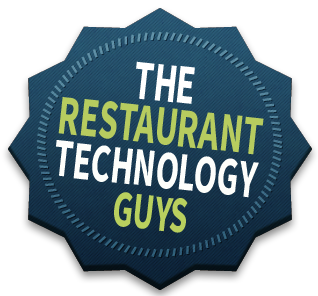Today we have a special treat, our friends over at Panda Paper Roll, are giving you their 6 tips to choose the best restaurant POS. Show them some love and click on the link to learn more about the company!
Choosing the right point of sale system is one of the most critical investments that you make for your restaurant. As much as you want to streamline your day-to-day operations as soon as possible, it is important to keep in mind that coming up with the right POS system is an extensive process itself.
Many businesses have their own struggle finding the best POS system that perfectly fits with their business environment and that holds true for restaurants. Part of it is knowing the things that you must consider to ensure that your business will experience benefits, rather than disruptions, throughout the implementation of your new POS system. Detailed below are some of the tips that will help you choose the best POS system for your restaurant.
View the whole infographic here: 6 Tips to Choose the Best Restaurant POS System
The first thing that you should do before buying a POS system is to define the exact needs for your restaurant. You must make a list of all the features and functions that you will need in a POS system to ensure a seamless processing of your customer’s orders. Here are some of the features you should consider when choosing a restaurant POS system based on your specific needs:
A lot of factors affects the price of a POS system. Go for the simplest one and you can surely save a lot of money but will be incapable to grow with your business in the future. If you plan to purchase a system that has all the bells-and-whistles, you might end up wasting money on functionalities you may never use or not even need. To avoid that, you must identify the costs associated with implementing a POS system and your business needs and goals.
With countless POS vendors in the market today, it is important to do your own research to find out which company has the most suitable and cost-effective POS system for your business. When asking for a price quote, don’t forget to ask for the inclusion of relevant information like their number of years in the industry or customer testimonials.
The issue of usability is extremely important especially if your staff are not familiar with the new system. Since speed is one the critical requirement in a restaurant, you must make sure that the POS system has a user-friendly interface and can be operated with minimal training and supervision that your staff can process the orders at lightning speed.
Aside from intuitive layout, another factor that can immensely affect the speed of a POS system is the hardware components. Many of the POS systems today can be operated via touchscreen monitor and some can even be installed in a tablet, allowing your staffs to take orders from any location in your restaurant. Although an easy to use POS system may often come at an extra cost, it would pay off through improved efficiency of the server, reduced errors, faster order fulfillment, and better overall experience for your customers.
Your customers go to your restaurant because they need to fill their stomach, and aside from the long queue, nothing will annoy them worse than a sudden malfunctioning of the POS system. When this situation happens, it is important to ensure that your vendor has someone on the phone that can troubleshoot the system. This can save your staff from a lot of headaches and complaints from your customers in the long run.
Gone are the days when POS systems only revolve around the payment and order processing. With the rise of modern technology, many of the current restaurant POS systems have an embedded marketing automation tools that will help you manage customer information, recall customer order history, and let you add special notes to your customer’s profiles, like their allergies or preferred method of cooking.
Furthermore, most of the restaurant POS systems have an integrated social media management tools – allowing you to send messages to your followers on various social media channels like Facebook. Twitter, and Instagram. As well as alert them to special promotions and upcoming events in your restaurant.
Additionally, you can give your customer the option of receiving a printed receipt. Email receipts are becoming more accepted but, you can take advantage of printed receipts as a marketing tool and double it’s purpose as a discount coupon or personalized message.
Whether you’re just starting out or you’ve already been in the restaurant industry for several years, whichever POS system you will choose will greatly impact the overall efficiency of your operations and workforce. With capabilities that can reduce the hours spent on manual processes and human errors, a POS system is certainly one of the most useful assets that your company can own.
Need to pass the time between our next post? Then check out Custom Business Solutions for all your restaurant technology needs!
